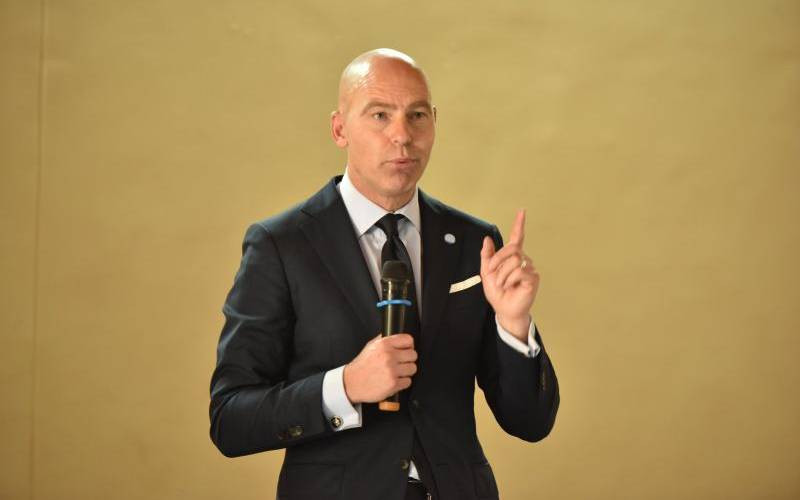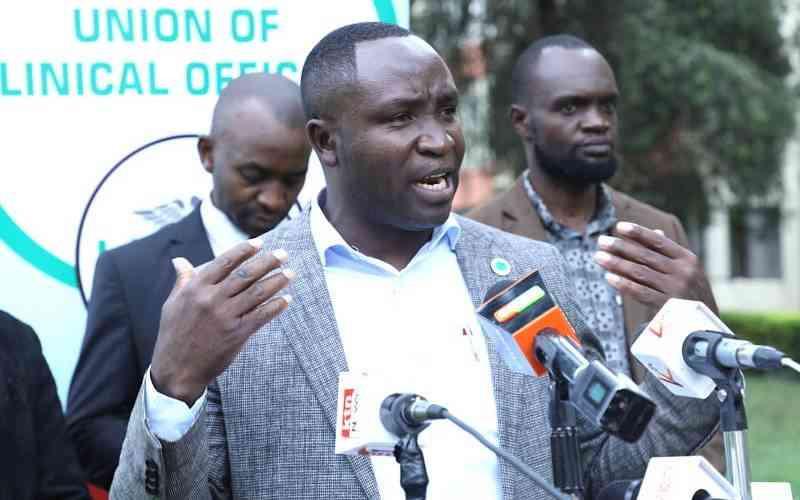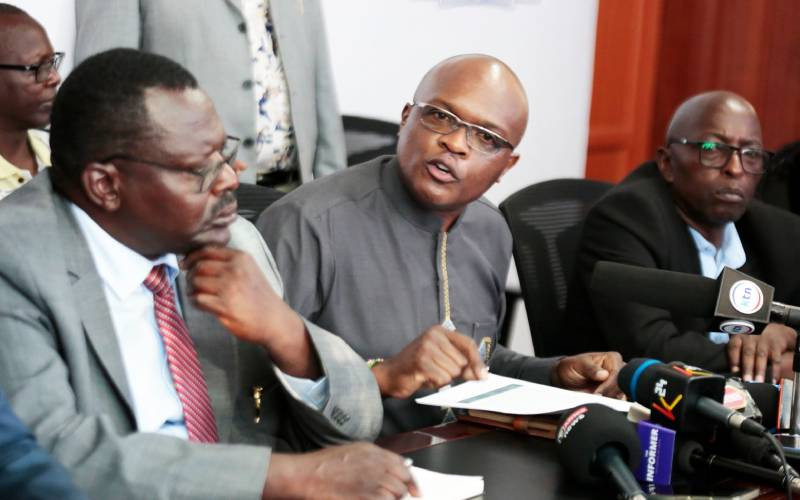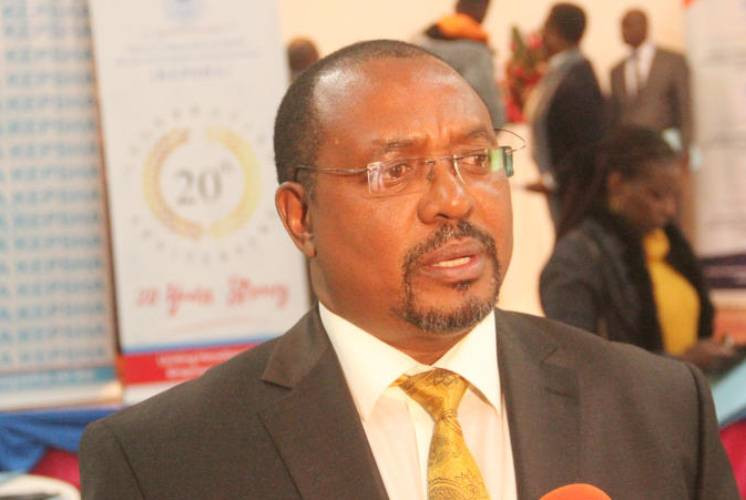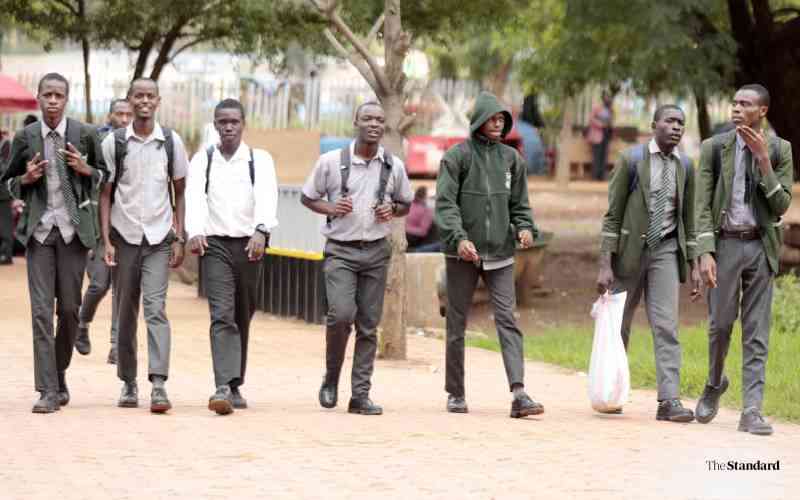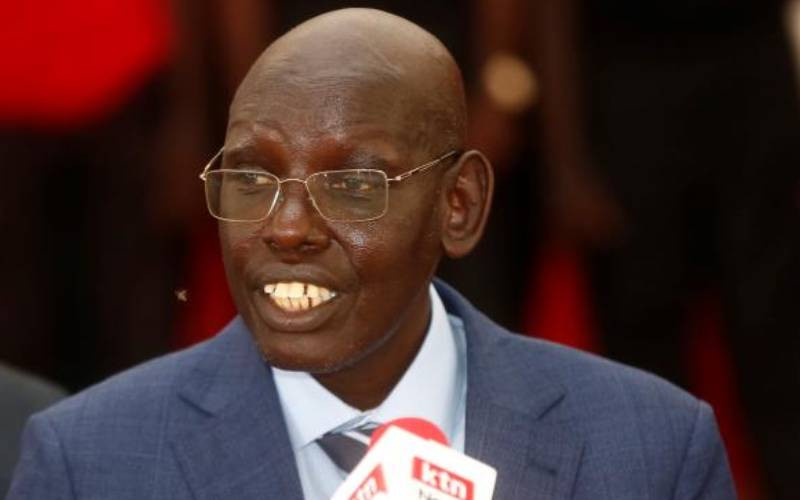
At least four million learners across the country are set to benefit from the school feeding programme.
Basic Education Principal Secretary Belio Kipsang said the programme targets four million learners and additional funding of Sh7.7 billion will be required to implement the same successfully.
National Council for Nomadic Education in Kenya (Naconek) Chief Executive, Harun Yussuf, who is implementing the programme said that the agency will fundraise to help needy children.
"We shall need to raise the money so that the children can benefit from this programme in a wider and scaled-up plan this year," said Yussuf.
Dr Kipsang announced that the Ministry of Education aims to enrol more children in the programme nationwide.
Currently, 2.6 million children benefit from the feeding programme in public primary schools, special needs institutions and select Junior Secondary Schools.
It also emerged that the programme under the Jubilee government only benefited 1.6 million children for Sh1.96 billion.
President William Ruto's Kenya Kwanza administration scaled up the programme to benefit 2.5 million learners for Sh6 billion.
At the close of last year, about 2.5 million were accessing food in schools, particularly in the arid and semi-arid counties.
Overall, the ministry targets to have 10 million learners enrolled on the programme by the end of President Ruto's term in 2027.
Currently, the programme benefits learners in all public primary schools in arid counties, selected schools in semi-arid areas, special needs schools, informal urban settlements and refugee camp-based schools.
According to the Naconek status report seen by The Standard, out of the counties listed in the programme, 11 are under the cash transfer distribution category.
In this category, Kitui county is leading with 413 schools while 15 counties receive the food in in-kind modality led by Baringo and Turkana counties with 487 and 424 schools respectively.
The report also indicates that Kakamega leads in the list of counties with the highest number of special needs students at 2,915 from 24 schools.
"The objective is to reduce hunger, boost attendance and retention of students in schools and enhance Primary School completion rates," reads the Naconek report.
Some 3,103 schools in arid regions have been categorized under the in-kind distribution model where 997,101 learners will have access to food in school.
Others listed are 2,051 schools in semi-arid areas with 666,567 learners and some 34,152 learners in 293 special needs schools in the 47 counties.
The counties selected include Baringo, Elgeyo Marakwet, Embu, Kajiado, Kilifi, Kitui, Kwale, Laikipia, Machakos, Makueni, Nairobi, Narok, Nyeri and Taita Taveta.
Those in urban informal settlements are 1,487 schools with 550,316 students.
In the 11 arid counties and the special needs schools, food is centrally procured and transported to the sub-county warehouses for secondary distribution to schools.
For selected schools in semi-arid areas, their arrangement will be under the cash-transfer modality.
Further, the PS said the school meal programme whose implementation is set for January focuses on improving basic education.
It is also aimed at promoting agriculture and contributing to the overall health and nutrition status of children from food-insecure households
"Implementation of the programme is also targeted to promote local agricultural production by increasing smallholder farmers' access to school as markets and providing employment opportunities for the young people," Dr Kipsang said.
Going forward, the Ministry of Education intends to work with large- and small-scale farmers to produce food for the school feeding market.
This is intended to support the adjacent communities to produce food locally to sell it to the school.
Besides, the ministry plans to establish farmer schools to enable food production in schools for learners as a way of establishing homegrown food solutions.
Some of the projects earmarked to boost food production in schools include the installation of rainwater harvesting systems the construction of solarized boreholes and truncated ponds for adequate water supply.
 The Standard Group Plc is a multi-media organization with investments in media platforms spanning newspaper print
operations, television, radio broadcasting, digital and online services. The Standard Group is recognized as a
leading multi-media house in Kenya with a key influence in matters of national and international interest.
The Standard Group Plc is a multi-media organization with investments in media platforms spanning newspaper print
operations, television, radio broadcasting, digital and online services. The Standard Group is recognized as a
leading multi-media house in Kenya with a key influence in matters of national and international interest.


